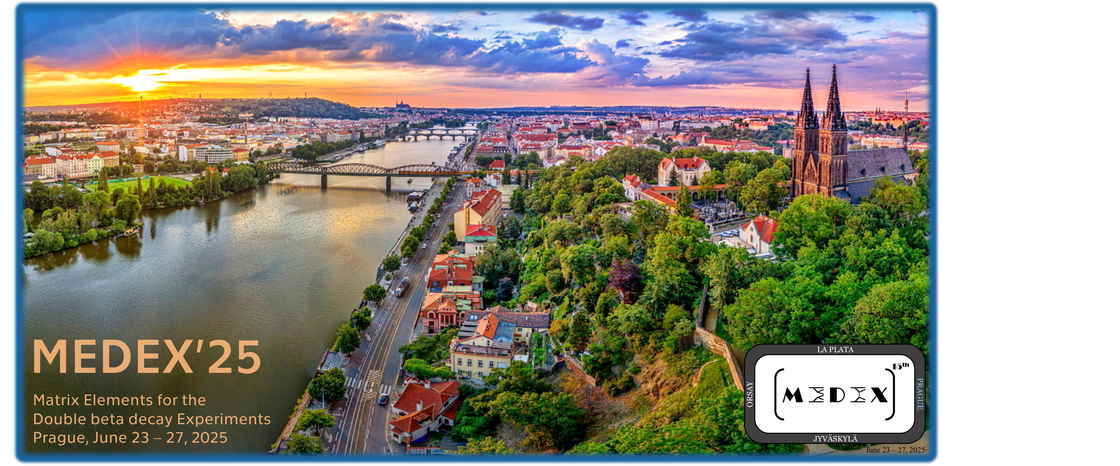Speaker
Description
Neutrinoless double beta decay (NDBD) involves virtual transitions through states of an intermediate nucleus. The wave functions of these states can be efficiently probed by the ordinary muon capture (OMC), a process where a nucleus captures a negative muon from the lowest atomic orbital. The OMC on the NDBD daughter populates the states of the intermediate nucleus of the NDBD, like in the case of $^{136}$Xe NDBD the capture on $^{136}$Ba populates the states of $^{136}$Cs. Since both processes have similar momentum exchanges, they can populate intermediate states of high excitation energy and high angular momentum. This is how the OMC probes effectively the wave functions of all the intermediate states relevant for the NDBD. First attempts to correlate the NDBD amplitudes through the intermediate states and the OMC rates to these states have recently been performed in this NDBD system.
Furthermore, the rates of NDBD and OMC depend on the value of the weak axial coupling, $g_{\rm A}$. In particular, the NDBD rate is highly sensitive to the effective value of $g_{\rm A}$. This effective value can be probed in the NDBD-relevant momentum exchanges by OMC, but also recently by charged-current neutrino-nucleus scattering of stopped-pion neutrinos on $^{127}$I.

